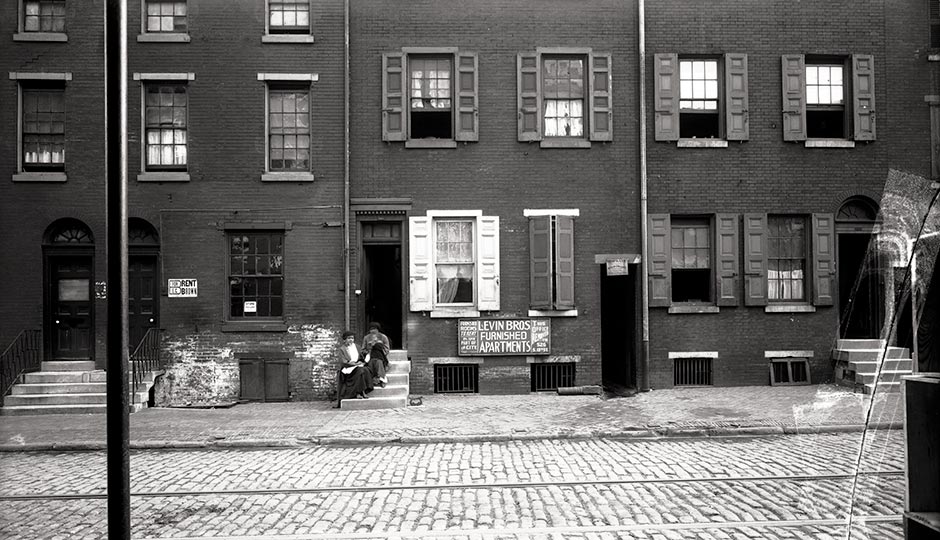In Praise of the Philly Stoop

Two women sit on the stoop at 1308 Lombard Street in 1913. Photo from PhillyHistory.org, a project of the Philadelphia Department of Records
Over the next few weeks, as the weather in the Delaware Valley makes its slow, humid descent from gloriously sun-kissed to armpit-soakingly swampy, you, dear reader, will find yourself overwhelmed with the desire to get away. And you will have options. There will be no shortage of articles and news segments advising you of the multitudinous places you can get away to. And sure, jet off to the French Riviera, Rich Uncle Pennybags, if that’s where your bliss — and your rewards card — takes you. But I posit that this year, the best summer spot is much closer. And I’m not even talking about the Shore.
I’m talking about the stoop. Everyone has one. It’s at once impossibly ordinary — it’s the steps to your door, duh — and grand — per urbanist saint Jane Jacobs, the basic building block of community, the perch for her famous “eyes upon the street.”
In a year when social media has made us increasingly antisocial and politics have rendered us hopelessly divided, it’s time for a re-appreciation of the humble stoop and the centuries-old tradition of hangin’ out on it.
There’s nothing to stoop sitting. You just do it. Of course, a cold beverage helps. A few complicit neighbors do, too. Camping chairs and a misting device from Home Depot are the height of luxury. On my small block in South Philly, our neighborhood Facebook group — where residents kvetch about the Parking Authority and sketchy solicitors — started as a tool for coordinating stoop drinking. “Great day to café,” someone will post. “Be right out,” someone invariably responds. On our block, to drink on your stoop is “to café,” a verb. When we café on a stoop closer to 8th Street, it’s Café East. Closer to 9th? Café West. Much imbibing happens at these pop-up parties, but they’re also where block cleanups are discussed, new neighbors are met, and people who might not agree on politics at least concur that the guy around the corner should stop parking on the sidewalk.
It’s not just that a stoop is good for sitting on. The magic of a stoop, says Randall F. Mason, associate professor and chair of historic preservation at Penn, is its role as a transitional space. “We talk about public and private space as if it’s black and white. The interesting stuff is always about the gray areas,” says Mason. “The more different kinds of public and private space we have, the better the urbanism.”
Mason lived for a time in Brooklyn, among its famously ornate stoops (“too beautiful and generous to be really shared”), but feels Philly’s lower stoops are more inviting. And it’s this approachability that is key to good stoop sitting. Writing in 1986 about the porches of Mantua in Perspectives in Vernacular Architecture, scholar Alice Gray Read noted, “Here, residents are separated from the public way yet close enough to be both audience and actors, maintaining both the possibility of distance and the possibility of involvement.”
How exciting! Which is perhaps why for all the time my wife and I devote to cleaning and greening the concrete patch we call our backyard, we spend infinitely more time out front, gabbing, drinks in hand, with our neighbors. And why, for all the time we spend planning various trips throughout the summer, nothing’s quite as thrilling as those magic words on an unexpectedly plan-free Saturday: “Great day to café.”
You, too, ought to consider gathering a neighbor or two and booking a trip to your stoop. After all, as Jacobs put it in her treatise on urbanism, The Death and Life of Great American Cities, “Nobody enjoys sitting on a stoop or looking out a window at an empty street.” To make it worth doing, you’ve simply got to do it. The magic will follow.
Follow @brianghoward on Twitter.
Published as “Stoop to Conquer” in the June 2017 issue of Philadelphia magazine.


